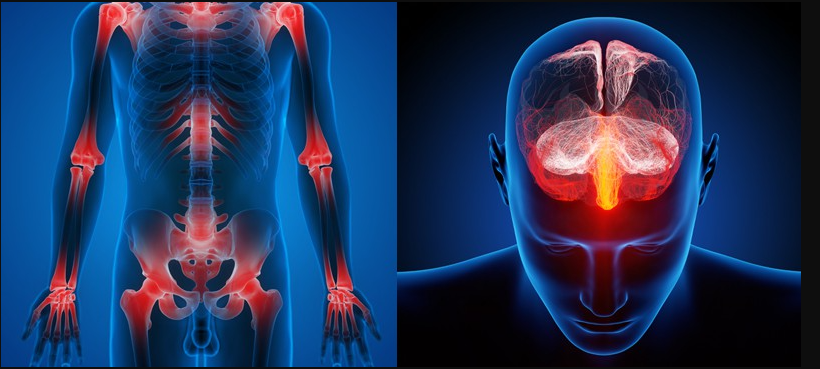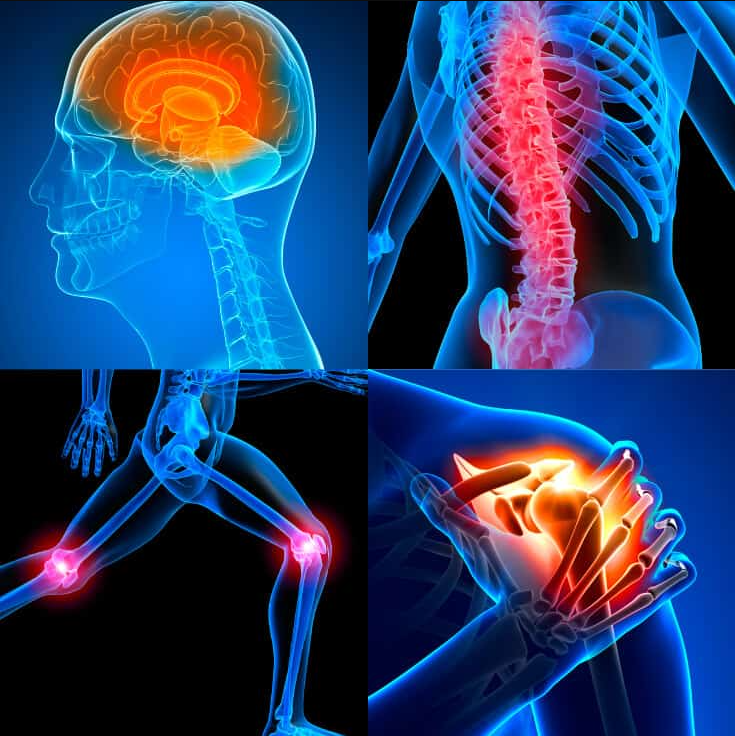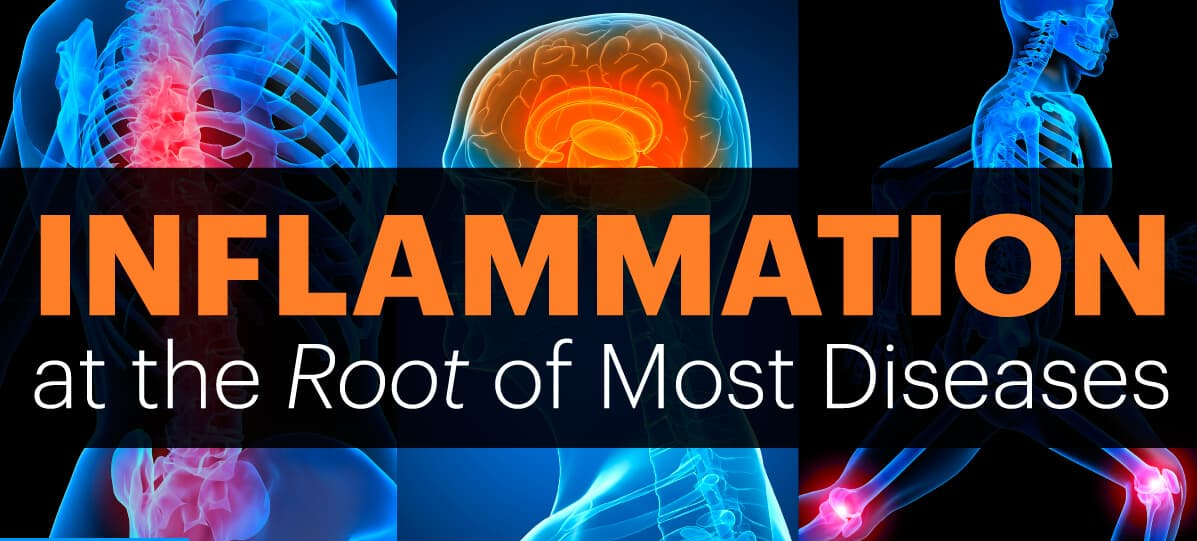Inflammation vs. Infection: Key Differences Explained
As a journalist passionate about health education, I find the conversation surrounding inflammation and infection pivotal to our understanding of the human body’s reactions to disease and injury. One common query that arises is: “what is the difference between inflammation and infection?”
With a myriad of symptoms overlapping these two conditions, it’s essential to distinguish inflammation from infection for precise diagnosis and treatment. In this article, I aim to clarify the inflammation vs infection differences, ensuring you can identify and address each condition appropriately.
Key Takeaways
- Inflammation is a protective response, while infection is caused by harmful microorganisms.
- Understanding the signs can lead to better treatment decisions.
- Chronic inflammation can contribute to serious health issues.
- Not all types of inflammation result from an infection.
- Infections always involve an external pathogen.
- Accurate diagnosis of these conditions is essential for effective healthcare.
Understanding Inflammation: The Body’s Protective Response
My exploration into the realm of health begins with addressing a critical question: what is cellular inflammation? Simply put, cellular inflammation is the body’s reflexive defense mechanism, an inflammatory response prompted by injury or infection. This process sounds the alarm within your system, summoning your immune forces to the site of damage. The cardinal signs of inflammation — redness, heat, swelling, pain, and sometimes loss of function — are indicative of the body’s battle to heal and protect itself.
While inflammation is an essential part of the body’s healing arsenal, it’s not always a fleeting ally. There are two main types of inflammatory responses: acute and chronic. Acute inflammation is the immediate, localized reaction that serves as a protective and healing measure. Conversely, chronic inflammation can silently persist in the body, often without the classic signs, contributing to various diseases and wearing down our physiological resilience over time.
- Acute Inflammation: Rapid onset, short-term, typically beneficial
- Chronic Inflammation: Slow development, long-lasting, potentially harmful
Understanding the mechanics of these two forms of inflammation is vital. Acute inflammation acts like an efficient emergency response team, whereas chronic inflammation can be likened to a false alarm that doesn’t shut off, eventually causing collateral damage.
In recognizing the signs and types of inflammation, one is better equipped to maintain health and seek appropriate treatment when necessary.
The Mechanisms of Infection: When Microbes Invade
Continuing our exploration into the inner workings of the body’s response systems, we now turn our attention to the darker side of microorganisms and their role in infection vs inflammation. Infections arise when harmful pathogens such as bacteria, viruses, fungi, and parasites invade the body, often leading to disease.
Understanding what causes infection is crucial for prevention and treatment.
Each invader has its unique modus operandi. For instance, bacterial and viral infections represent two very different challenges for the immune system. Bacteria are single-celled organisms that can thrive in various environments, inside or outside the human body.
Viruses, on the other hand, require a host to replicate and survive. While bacteria can sometimes be combated with antibiotics, viral infections are usually targeted by the body’s immune defense mechanisms and antiviral medications.
- Bacteria: Often treated with antibiotics, these single-celled organisms can independently replicate and may cause diseases such as strep throat and urinary tract infections.
- Viruses: Responsible for ailments from the common cold to more severe conditions like HIV/AIDS, these require a host cell to reproduce and are not affected by antibiotics.
- Fungi: Responsible for skin diseases like athlete’s foot, fungal pathogens thrive in warm, moist environments.
- Parasites: These pathogens live on or in a host, causing diseases like malaria.
Let’s delve into the cellular battle that commences when an infection occurs. Upon invasion, our immune system is alerted, which in turn may trigger inflammation, a protective response.
The areas affected by the infection often become inflamed as part of the defense strategy, which is the body’s way of trying to remove the invaders and heal the affected tissue.
An important distinction to make is that while infection is always caused by external pathogens, inflammation can occur in response to a variety of stimuli, including infections, physical injuries, or autoimmune diseases. The following table provides a comparison of common infections and how they impact our health:
| Type of Pathogen | Common Diseases | Treatment Approach |
|---|---|---|
| Bacteria | Strep Throat, Urinary Tract Infection | Antibiotics |
| Virus | Influenza, HIV/AIDS | Antivirals, Supportive Care |
| Fungi | Athlete’s Foot, Ringworm | Antifungal Medications |
| Parasites | Malaria, Tapeworms | Antiparasitic Drugs |
It’s imperative for us to grasp the mechanisms of bacterial and viral infections and their juxtaposition against inflammation to accurately identify and treat each condition. I urge readers to consider the complexities of these biological phenomena and seek medical guidance when necessary.
The more we comprehend about what causes infection, the better prepared we are to support our body’s natural defenses.

What is the Difference Between Inflammation and Infection
Understanding what is the difference between inflammation and infection is crucial for accurately identifying and addressing these common health concerns. As I dissect the nuances of each condition, you’ll gain insight into why they should not be confused, despite their intertwined nature.
Firstly, inflammation is the body’s response to injury or irritation. It is a protective reaction involving immune cells, blood vessels, and molecular mediators that aim to remove harmful stimuli and initiate the healing process. When we consider what’s the difference between inflammation and infection,
It’s key to note that inflammation can be triggered by factors other than infections such as physical trauma, exposure to toxins, or autoimmune reactions.
In contrast, infection is caused when pathogenic microorganisms like bacteria, viruses, or fungi invade the body and multiply, leading to tissue damage and illness. Infections always involve an external pathogen, whereas inflammation can occur without any infectious agents being present. Moreover, infections can lead to inflammation as the body attempts to eliminate the invading pathogens.
| Inflammation | Infection |
|---|---|
| Body’s defense mechanism | Caused by external pathogens |
| Can be a response to various stimuli (injuries, toxins) | Direct result of microbial invasion |
| Signs: Redness, swelling, heat, pain, and loss of function | Signs: Similar to inflammation, often accompanied by fever and pus |
| Not always indicative of infection | Always indicative of a pathogen presence |
To further clarify, an individual might experience inflammation due to a variety of non-infectious diseases such as rheumatoid arthritis or Crohn’s disease. This elucidates that inflammation can be both a natural protective measure as well as a signal of underlying health issues when it becomes chronic.
In conclusion, discerning what is the difference between inflammation and infection is fundamental for proper medical evaluation and treatment. Recognizing that inflammation is a symptomatic response that can arise from myriad triggers, whereas infection is a specific kind of assault on the body by foreign organisms, helps us comprehend their distinctions and interconnections.
Identifying Signs of Infection: Not Just Feeling Unwell
In my experience as a health writer, understanding the signs of infection is crucial for anyone seeking to maintain their well-being. It’s easy to attribute a slight fever or mild pain to a rough day or poor sleep, but recognizing the potential symptoms of bacterial infection can be a lifesaver.
To help you, I’ve compiled a list of infection indicators that should prompt closer attention, and in some cases, immediate medical action.
| Sign/Symptom | Description | Immediate Action Recommended? |
|---|---|---|
| Fever | An increased body temperature often indicating your body is fighting an infection. | Yes, if high or persistent. |
| Swelling | Localized enlargement often caused by inflammation as a reaction to infection. | Yes, if sudden or severe. |
| Pain | A strong discomfort that can be either localized (at the site of infection) or systemic. | Yes, if pain is severe or worsening. |
| Redness | A common response to infection, appearing as red patches on the skin, often near the infection site. | Yes, if spreading rapidly. |
| Pus or Discharge | A possible indicator of infection, particularly in wounds, indicating accumulation of dead cells and microbes. | Yes, especially if accompanied by a foul odor. |
| Unusual Fatigue | Excessive tiredness not caused by exertion, which can be a systemic sign of the body fighting an infection. | Monitor, and see a doctor if it persists. |
Keep in mind that while each of these can be signs of a myriad of conditions, when they appear in tandem or are unusually severe, they warrant a closer look. Especially in the case of the body’s systemic responses, like a high fever or sudden fatigue, the body may be indicating a battle against a spreading infection. Stay alert to these infection indicators, and when in doubt, consult a healthcare provider to rule out or confirm the presence of an infection.

Chronic Inflammation: When Inflammation Becomes the Enemy
As we delve deeper into the concerns surrounding chronic inflammation, it’s crucial to recognize its departure from being a normal physiological process to a state where it becomes a silent harbinger of inflammation-related diseases.
Chronic inflammation is likened to a low-grade fire that, over time, can cause significant damage to tissues, paving the way for the long-term effects of inflammation and contributing to diseases such as arthritis, heart disease, and some types of cancer.
One of the perplexing aspects of chronic inflammation is its ability to fly under the radar. Unlike acute inflammation, which manifests with overt signs such as pain, redness, and swelling, chronic inflammation can remain covert for years.
The subtle, insidious nature of this condition often accumulates damage without drawing attention, which is why it’s dubbed the “silent killer”.
- Arthritis: Persistent inflammation in the joints leads to degradation of cartilage and pain.
- Heart Disease: Inflammatory processes contribute to the buildup of plaques in arteries.
- Certain Cancers: Long-standing inflammation is thought to cause DNA damage that can lead to cancer.
Let’s consider the following table, which succinctly illustrates the correlation between chronic inflammation and select diseases, offering a snapshot of its far-reaching impact on health:
| Disease | Association with Chronic Inflammation | Consequences |
|---|---|---|
| Rheumatoid Arthritis | Autoimmune response targeting joints | Joint damage and loss of function |
| Heart Disease | Arterial inflammation and plaque formation | Increased risk of heart attacks and strokes |
| Type 2 Diabetes | Chronic inflammation leads to insulin resistance | Impaired glucose tolerance and metabolic complications |
| Alzheimer’s Disease | Inflammation in neural tissues | Neurodegeneration and cognitive decline |
| Certain Cancers | Chronic inflammation causing cellular mutations | Abnormal cell growth and tumor development |
The implications of these findings are profound. They underscore the importance of identifying and addressing the root causes of chronic inflammation, such as persistent infections, environmental toxins, or a diet rich in pro-inflammatory foods.
By interrupting the pattern of chronic inflammation, we could potentially thwart the progression of these severe health issues.
In my journey to better health, I’ve learned that preventive strategies—like maintaining a balanced diet, regular exercise, stress management, and avoiding known inflammatory triggers—are crucial components of reducing the risk of chronic inflammation and its long-term effects.
It’s a multi-faceted approach that not only requires medical intervention when necessary but also encourages a lifestyle geared towards systemic wellness.

Diagnosing Inflammation and Infection: Clinical Methods Explored
As a healthcare professional, identifying the presence of inflammation and infection within a patient is crucial to determining the right interventions. The process of diagnosing inflammation draws on a combination of physical examinations where redness, heat, swelling, and pain are observed.
However, to ascertain the cause of inflammation or to confirm an infection, we resort to more specific medical tests for inflammation and infection. These investigations include laboratory testing, such as complete blood counts (CBC), which can indicate inflammation through elevated white blood cells or C-reactive protein levels. Meanwhile, blood cultures or tissue biopsies can pinpoint infections, particularly if pathogenic microorganisms are present.
In addition to laboratory work, the clinical diagnosis of infection often necessitates the use of imaging techniques like X-rays, CT scans, or MRIs. These tools allow us to visualize the internal structures of the body where signs of infection such as abscesses may not be apparent during a physical examination.
My assessments take into account the full clinical picture, including medical history and symptom patterns, to distinguish between inflammation that is part of a natural healing process and that which signals an underlying infection that requires treatment.
Equipped with accurate diagnostic methods, healthcare teams can tailor treatment plans effectively, ensuring patients receive the most appropriate medications, such as antibiotics for bacterial infections, or anti-inflammatory drugs for cases of acute inflammation.
Indeed, the intersection of innovative laboratory work and the subtleties of symptomatology offers us a sophisticated landscape for tackling these pervasive health conditions. My role is not just to use these tools but to interpret their findings within the context of a patient’s overall health, optimizing their path to recovery.
FAQ
What is the difference between inflammation and infection?
Inflammation is the body’s natural response to injury or irritation, marked by signs such as redness, heat, swelling, and pain, and can occur without the presence of an infection. In contrast, an infection is caused by the invasion of pathogens, such as bacteria, viruses, or fungi, which multiply and elicit an immune response.
While infection often results in inflammation, inflammation can occur independently of infection due to non-infectious causes such as injuries or autoimmune diseases.
How can you distinguish inflammation from infection?
To distinguish between inflammation and infection, one must look at the cause and characteristics of each condition. Inflammation can be caused by a variety of factors, including physical injury, exposure to irritants, or as part of an autoimmune reaction.
The cardinal signs are redness, heat, and swelling. Infections, however, are characterized by the presence of a pathogen and can cause symptoms like fever, chills, pus formation, and increased white blood cell count. A medical evaluation is often required to differentiate between the two accurately.
What is cellular inflammation?
Cellular inflammation refers to inflammation that occurs at the cellular level within the body. This microscopic process involves various immune cells and inflammatory mediators that respond to damage or threats by targeting affected tissues.
This protective response aims to eliminate the initial cause of cell injury, clear out damaged cells and tissues, and establish repair processes. However, when uncontrolled, cellular inflammation can contribute to a variety of chronic conditions.
What are the signs of inflammation?
The classic signs of inflammation include redness, heat, swelling, pain, and sometimes loss of function in the affected area. These are responses to tissue damage that help isolate the affected area, prevent the spread of damage, and begin the healing process.
What causes infection?
Infections are caused by microorganisms such as bacteria, viruses, fungi, or parasites invading the body and multiplying. These pathogens can enter the body through various means, including skin breaches, inhalation, ingestion, or transmission from person to person or from the environment.
What are the long-term effects of inflammation?
Long-term or chronic inflammation can lead to a number of serious health issues, including increased risk of heart disease, arthritis, diabetes, cancer, and neurological disorders. Persistent inflammation can damage tissues and organs and play a role in the development of autoimmune diseases.
How are inflammation and infection diagnosed?
Doctors can diagnose inflammation and infection through physical exams, patient history, and a range of medical tests. These may include blood tests like complete blood count and C-reactive protein levels, imaging studies such as X-rays or MRIs for inflammation, and cultures or serology tests for infections.
The specific symptoms and laboratory results help practitioners determine whether inflammation or infection is present and guide the treatment plan.
Source links:
- Mayo Clinic – Inflammation: mayoclinic.org/inflammation
- CDC – Infectious Diseases: cdc.gov/infectiousdiseases
- NIH – Understanding Inflammation: nih.gov/news-events/nih-research-matters/understanding-inflammation

Leave a Reply